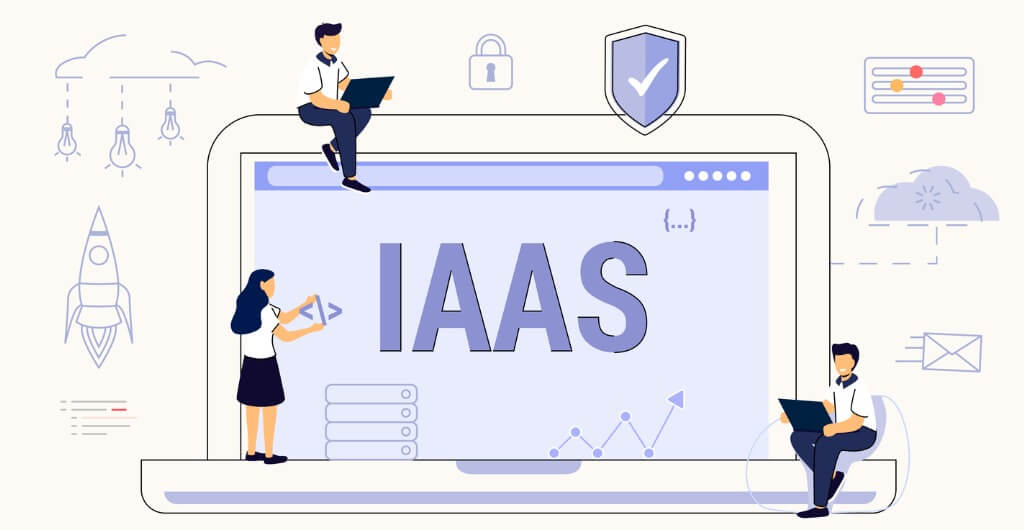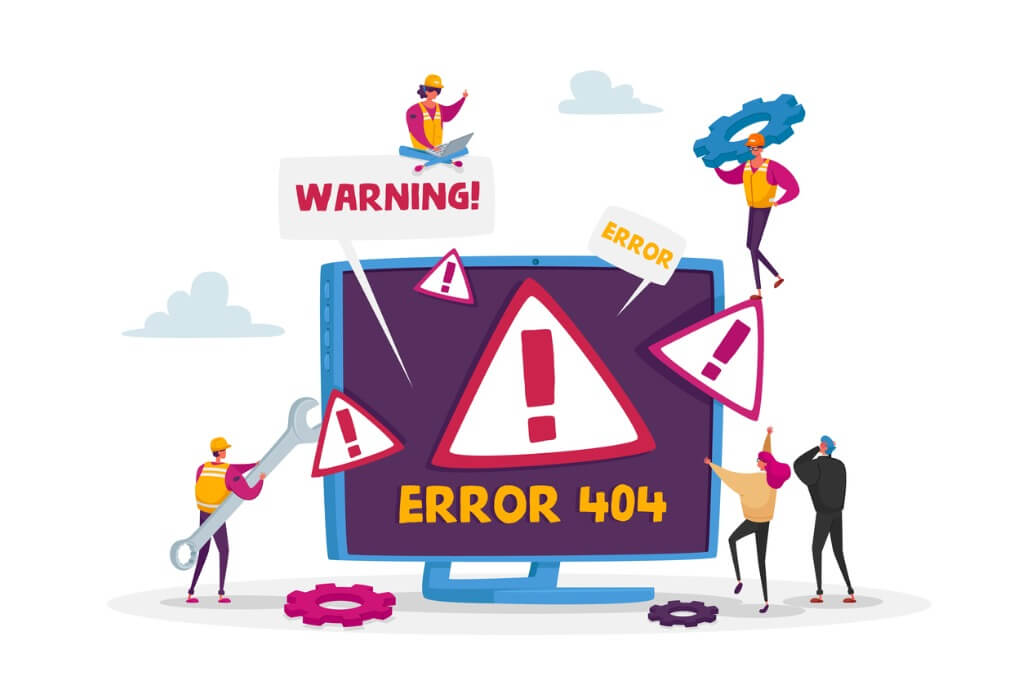What is Infrastructure as a Service?
In 2021, Gartner predicted that the global expenditures on cloud infrastructure services would nearly double from $59 billion in 2020 to a staggering $106 billion by 2022. This increased spending reflects an approximated growth of 38.5% for cloud infrastructure services over the past year.
But why does this matter? Every year the tech industry experiences immense growth. This sparks a greater need for new solutions, such as cloud computing. As your organization grows, so will your data and infrastructure. However, this growing infrastructure can be tedious and expensive to maintain. The solution that many businesses have been turning to resides in a cloud-based infrastructure service.
With a virtualized infrastructure you can cut costs while also maintaining a reliable and scalable approach to your services and products. If you’re interested in how a managed infrastructure works, or how one of these solutions can give you better control over your infrastructure, continue reading.
What is IaaS?
Infrastructure as a Service (IaaS) is a cloud-based business solution that provides virtualized IT infrastructure components over the internet. These managed resources can include virtualizations, storage, servers, and networking. This means the user is responsible for managing all other software. This includes applications, data, runtimes, middleware, and operating systems.
IaaS can be deployed across three different types of cloud platforms: private cloud, public cloud, and hybrid cloud. In the private cloud instance, infrastructure components are partitioned for exclusive use by an organization. Inversely, public cloud instance infrastructure components are created for use by multiple organizations. A hybrid cloud infrastructure utilizes a multicloud approach. It incorporates aspects of both private and public cloud setups.
Benefits of using IaaS
IaaS solutions offer a multitude of different benefits from reducing your physical hardware to scalability and even disaster recovery. However, these benefits will vary depending on your use case.
Lack of Physical Hardware
IaaS tools enable administrators and developers to build, deploy, and automate managed applications and virtualized machines. These tools remove the need for local hardware, which allows an organization to cut back on the cost of physical hardware that needs to be maintained.
This also means that you won’t have to fight the hardware market to buy new infrastructure pieces as your business grows. You can procure more servers and networking components without having to worry about the hardware being in stock. There’s also no wait times for shipping or setting up hardware pieces.
Operations
Many businesses also use IaaS solutions to run operational tasks. Examples of these tasks would be software development, application testing, and web hosting. In addition to operating tasks, IaaS providers usually offer high-performance computing services and big data analytics. This results in cheaper data analytics while simultaneously cutting down on operational costs.
Scalability
Since the networking components and servers are virtualized, these solutions are also scalable. Let’s say you experience a sudden spike in user traffic. With an IaaS platform in place, you can optimize your resources and easily handle the load balancing.
One benefit of having this much flexibility in your infrastructure is that it becomes more reliable indirectly. If one virtual server has an issue, you can have multiple others ready to pick up the slack. This reduces the amount of downtimes you’ll experience from infrastructure failures.
Disaster Recovery
Since information is processed through cloud storage, IaaS solutions offer fantastic disaster recovery options. Cloud storage is way more flexible in terms of storage size than traditional software storage methods and easy to back up. This means a system failure won’t result in loss of workflows.
IaaS vs SaaS vs PaaS
Infrastructure as a Service is one type of cloud service provider. Other cloud computing service solutions include:
- Business Processes as a Solution (BPaaS)
- Software as a Service (SaaS)
- Platform as a Service (PaaS)
- Desktop as a Service (DaaS)
- Management and Security Services
Of these, the three main cloud computing services are IaaS, SaaS, and PaaS.
Unsure which you need? Check out our post below for a full guide:
IaaS
Infrastructure as a Service is a model that utilizes virtual machines to create and distribute IT infrastructure and networking resources. Popular IaaS providers include Amazon Web Service (AWS), Linode, Oracle Cloud Infrastructure, and Microsoft Azure.
| Use case | IaaS is best suited for organizations that are looking to migrate their services to the cloud. IaaS solutions should also be used to cut costs on physical infrastructure components and maintenance. |
| Features | An IaaS model typically provides computing, networking, cloud storage, and virtualized servers. These solutions will manage your infrastructure workloads on-demand. This allows you to focus on application development, service provisioning, and security compliance. |
| Advantages | Paying only for what you useDynamic scalingIT resource allocation. Reduced downtimes/outages |
| Disadvantages | Peak usage times might cost more than intendedIaaS secures your infrastructure but not your applications/products Managing the availability of services can depend on how often the provider experiences downtimes |
SaaS
Software as a Service (SaaS) is a cloud-based model that allows software licensing and delivery through an online subscription. SaaS is commonly referred to as cloud application services. Popular SaaS solutions include DropBox, Salesforce, Google Workspace, and Slack.
| Use case | SaaS solutions are ideal for any situation where you need an application to be reliable and available with little input from the user. |
| Features | SaaS solutions usually are available through the internet, hosted remotely by a third party, scalable, and secure. |
| Advantages | Out of the box (everything is already available through the internet)Available anywhere, at any time Subscription model means payments are fixed for services Some services include security, compliance, and maintenance handling |
| Disadvantages | Little to no control over how secure your data is Integrations with other applications entirely depend on the provider’s partnershipsMinimal customization options Less control over data associated with the application in some instances |
PaaS
Platform as a Service (PaaS) is a cloud service that allows developers to build applications and other software on a digital platform. These solutions provide the developers with a digital development environment. The environment includes all the frameworks, software, and tools needed for the development process. Popular PaaS examples include AWS Elastic Beanstalk, Heroku, and Red Hat OpenShift.
| Use case | PaaS platforms are best suited for developers looking for an efficient and affordable way to create, test, and deploy applications and digital solutions. |
| Features | PaaS platforms tend to be accessible by multiple users, scalable, built using virtualized software, and easy to use. |
| Advantages | Cost-efficient for the development process ncreased availability for development resourcesScalableEasy to put down and pick up work on the platform |
| Disadvantages | Data security depends on the service provider Integrations with new applications might be difficult Languages and frameworks are dependent on the platform |
How does IaaS Work?
Using an IaaS solution is relatively straightforward. IaaS providers typically have on-premises data centers set up and ready to go. You simply need to identify your infrastructure needs, then select a provider that offers a solution that fits your needs.
Setup: Most providers will walk you through the setup process, and some setup processes are relatively quick and easy.
Pricing: Since these solutions are flexible and scalable, they will also manage the billing aspect of your plan as well. Many IaaS providers operate on a pay-as-you-go model, which allows you to only pay for the management of computing resources you need or want.
Integrations: Some solutions integrate with other software and applications. But it’s hard to say what those integrations look like as they differ from one provider to the next.
Support: Many IaaS providers specialize in IT infrastructure, meaning most providers will also offer good support. The teams working on these solutions usually come equipped with experts who can help with supporting the hardware.
Should You Consider an IaaS Solution?
Recent trends in the technology industry show a shift from physical server infrastructure. Many businesses are switching over to serverless, cloud-native infrastructure. Cloud services are easier to manage, scalable with organizational requirements, cost-effective, and provide immense operational benefits. Cloud services are only becoming increasingly more utilized as time passes. Now is the time that you should consider an IaaS solution for your organization and business needs.
Additional Information
Have you previously used an IaaS solution? Consider checking out our website and writing a review!











